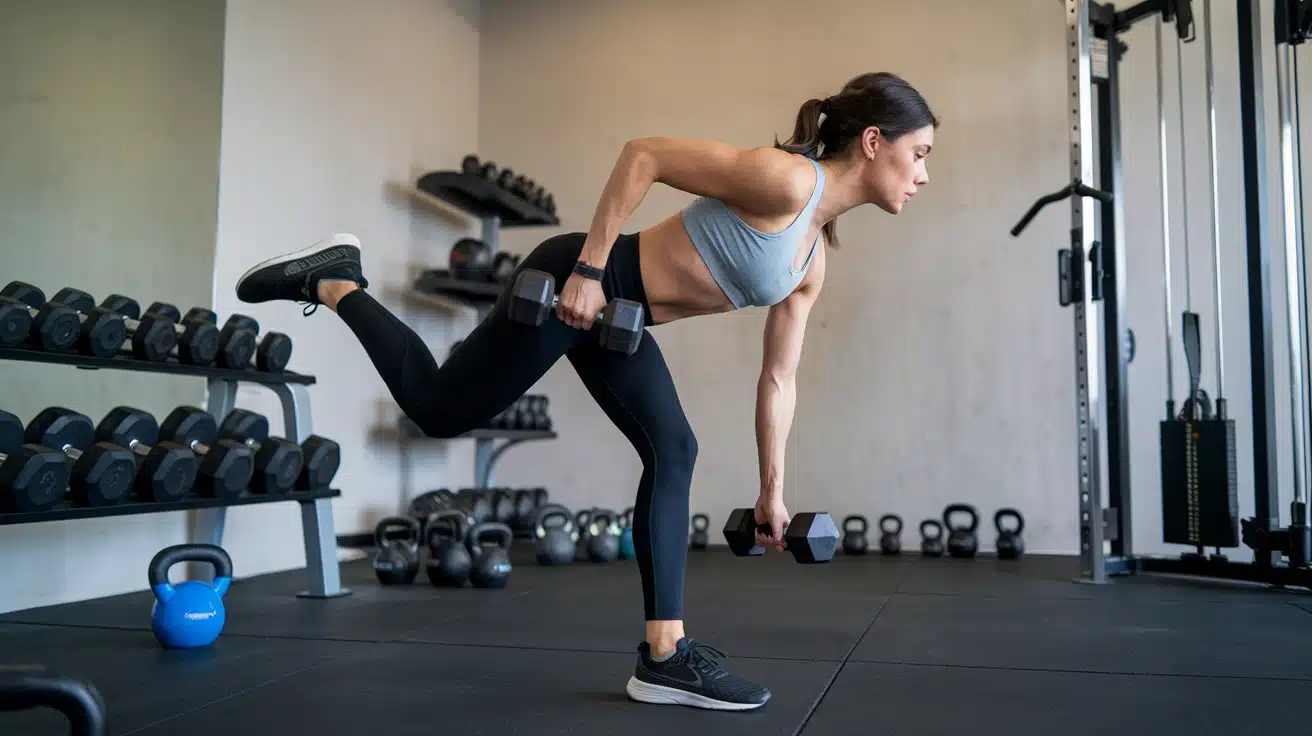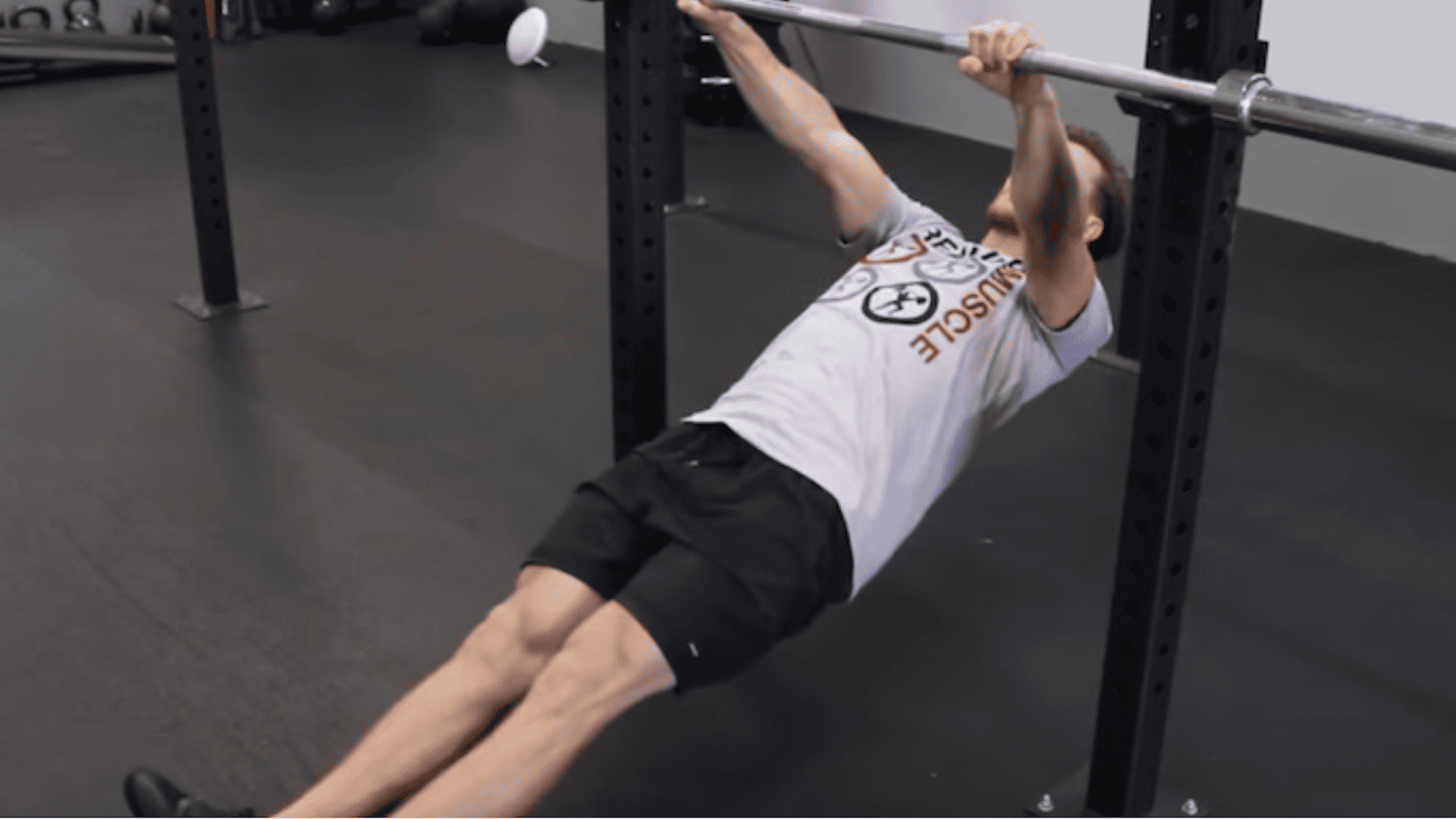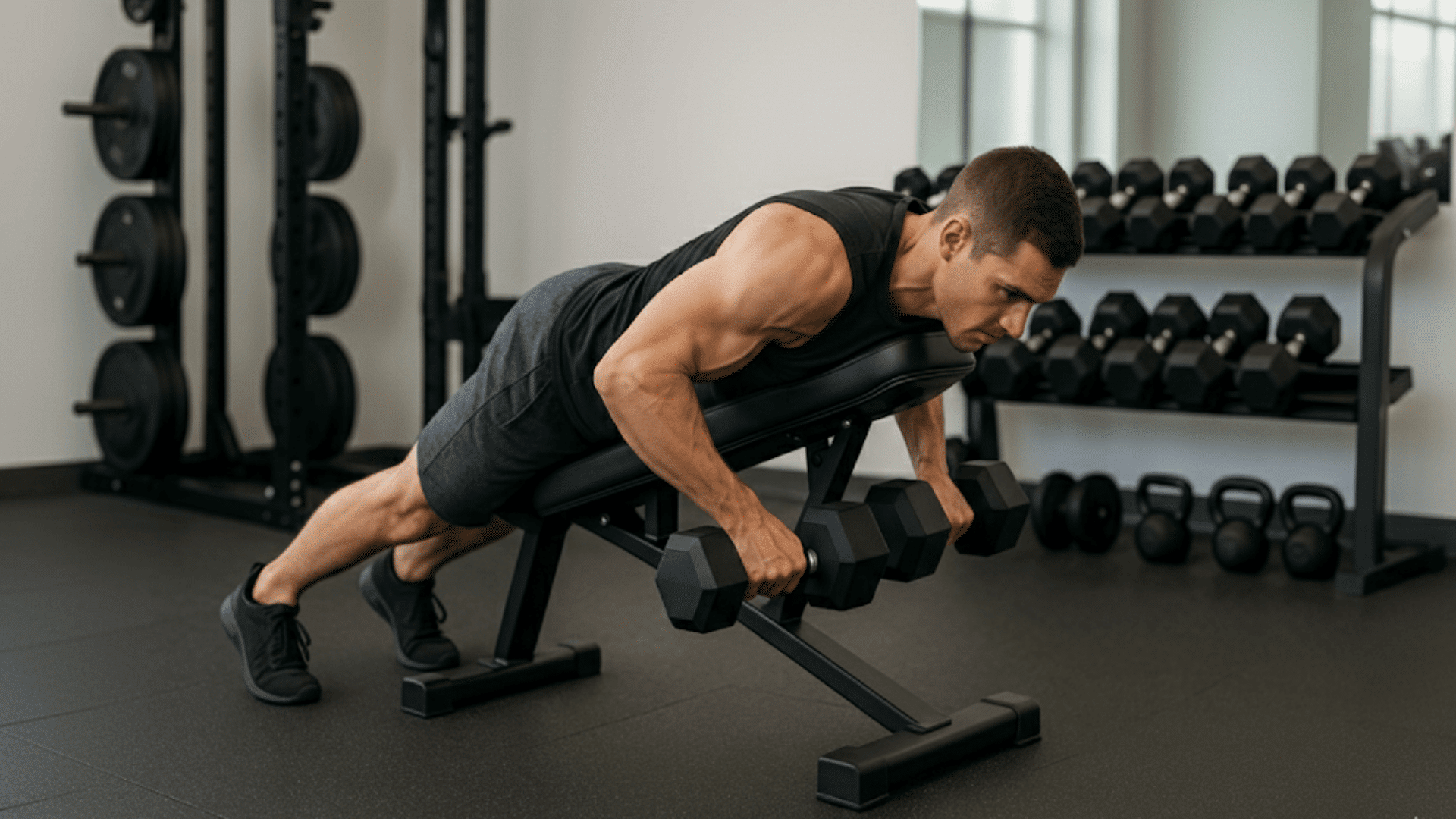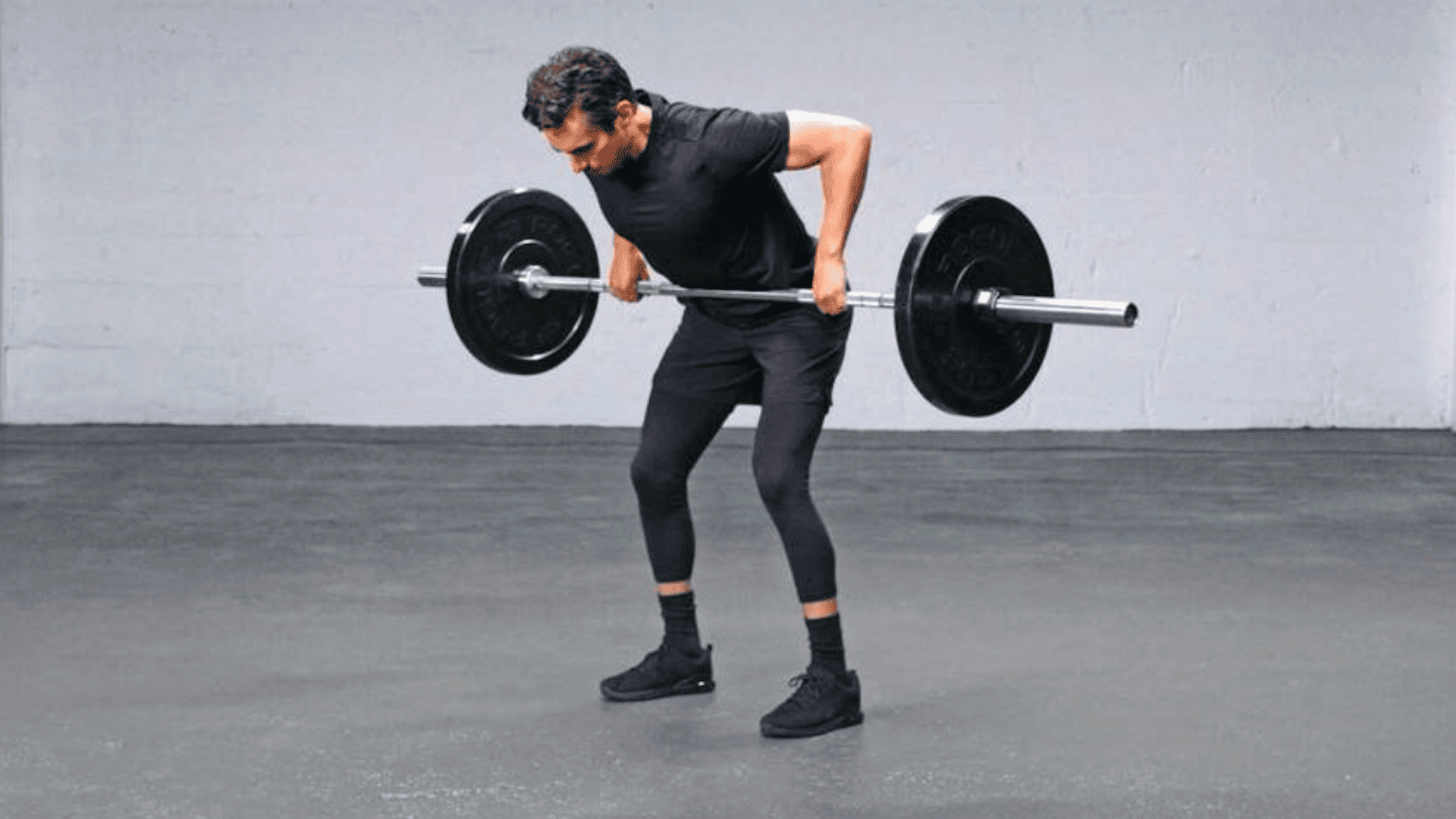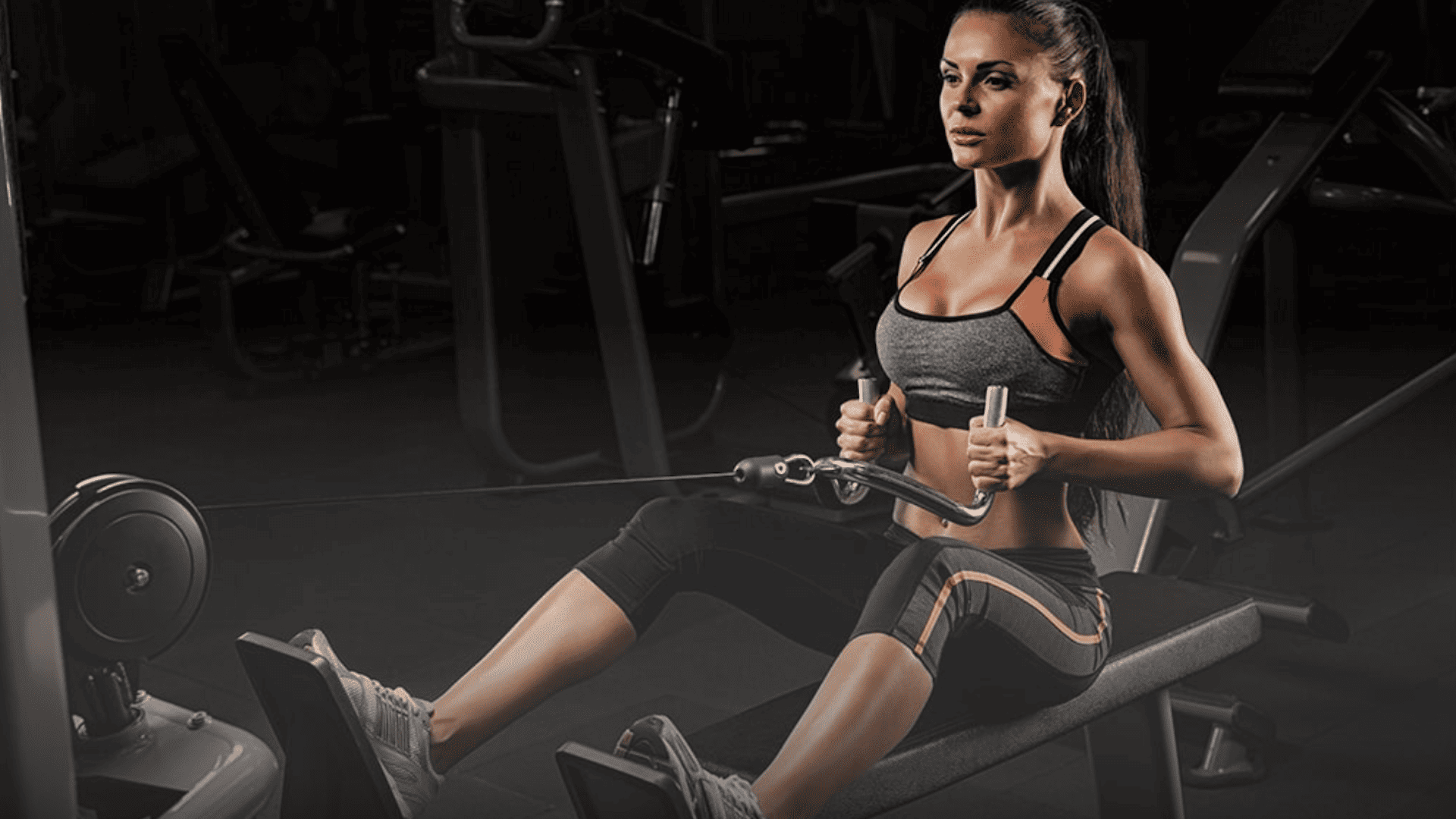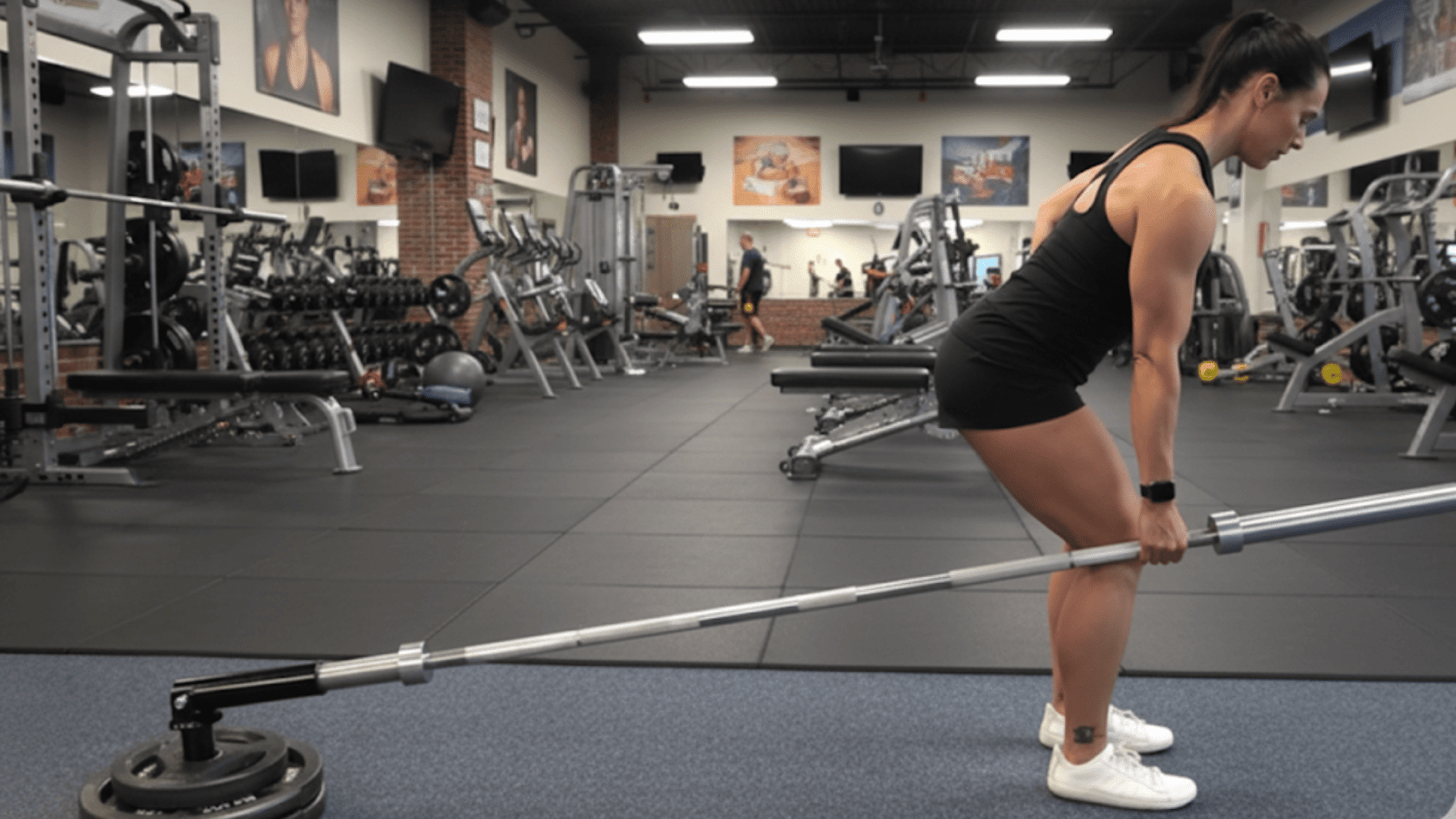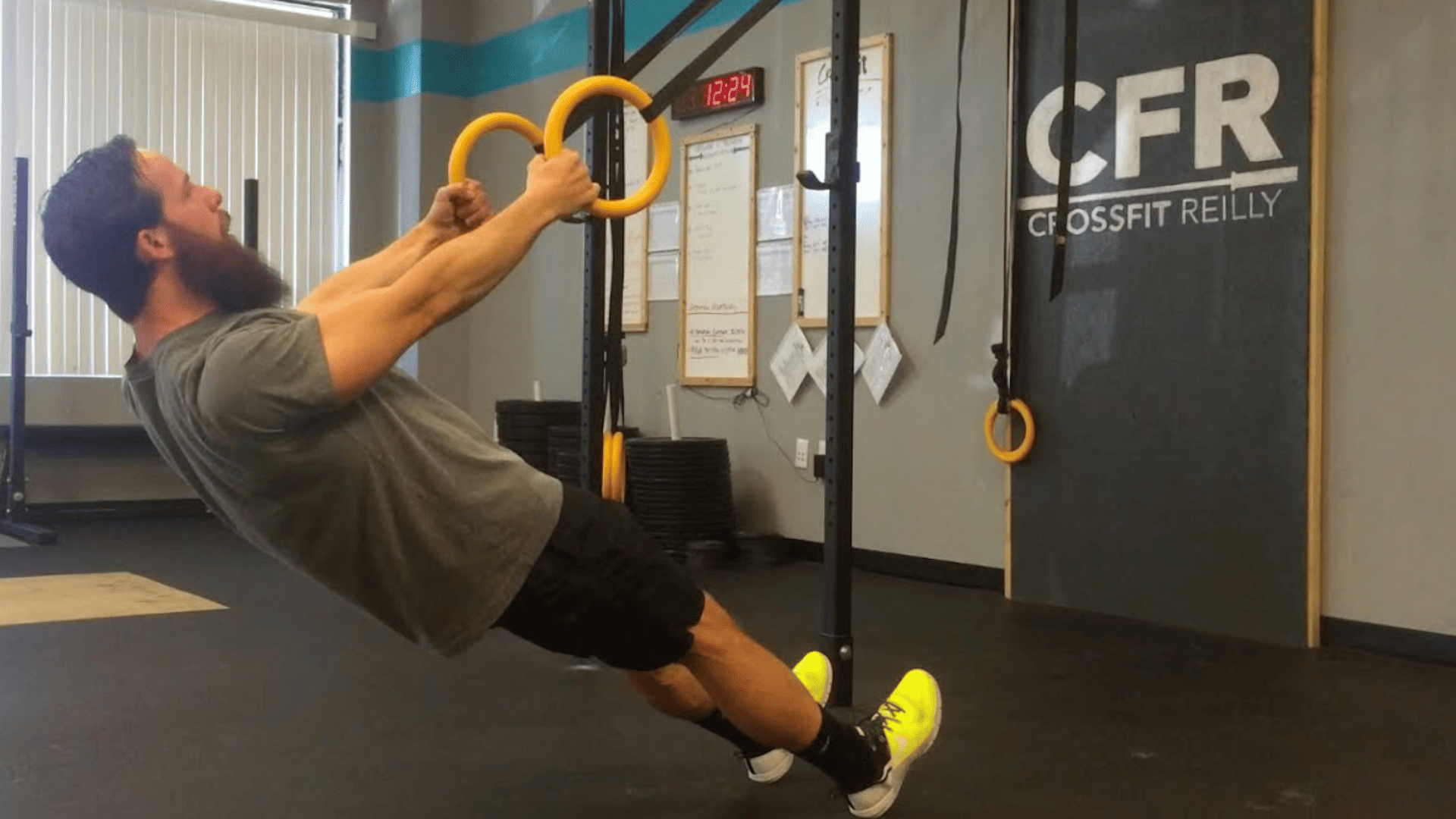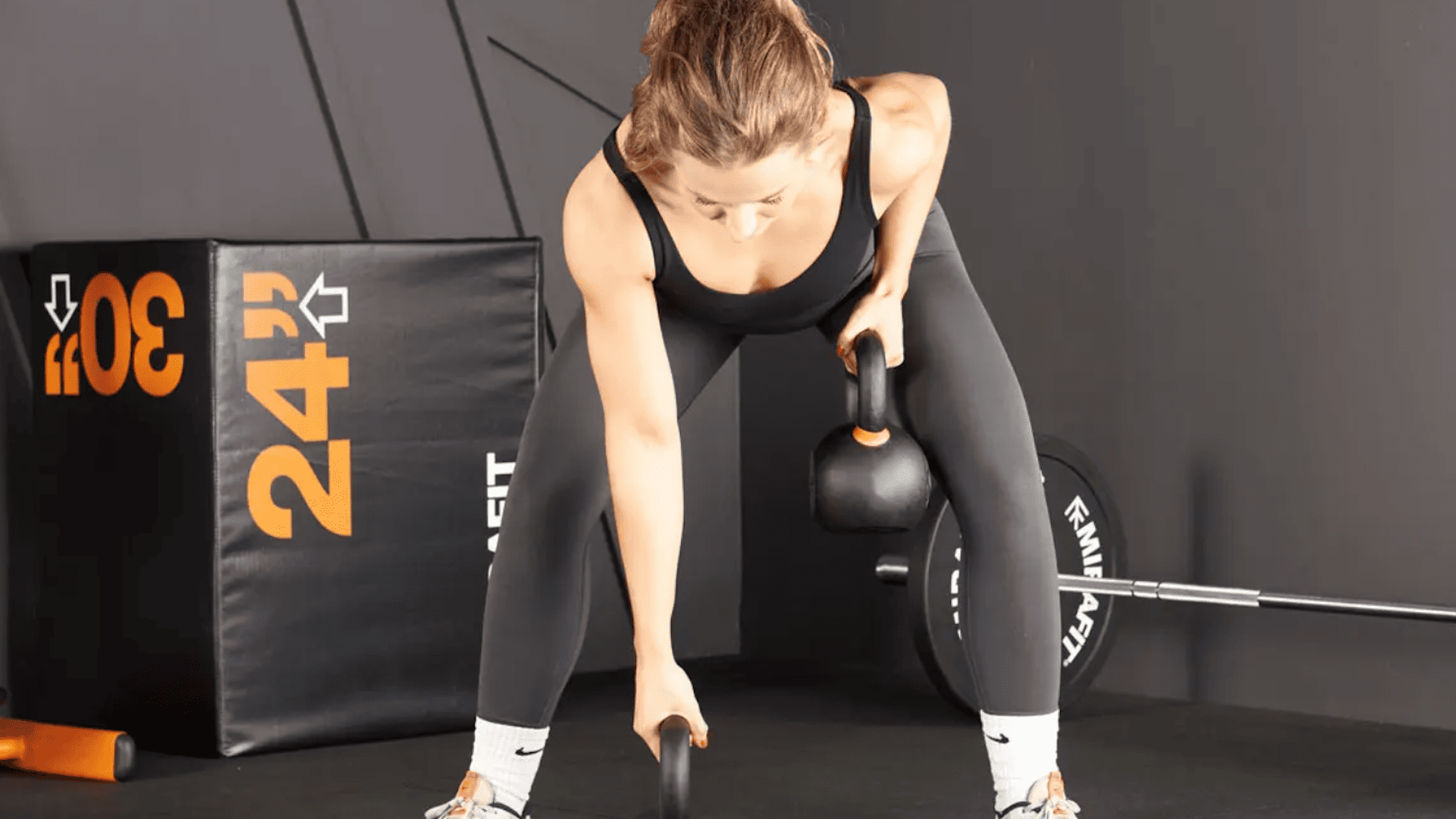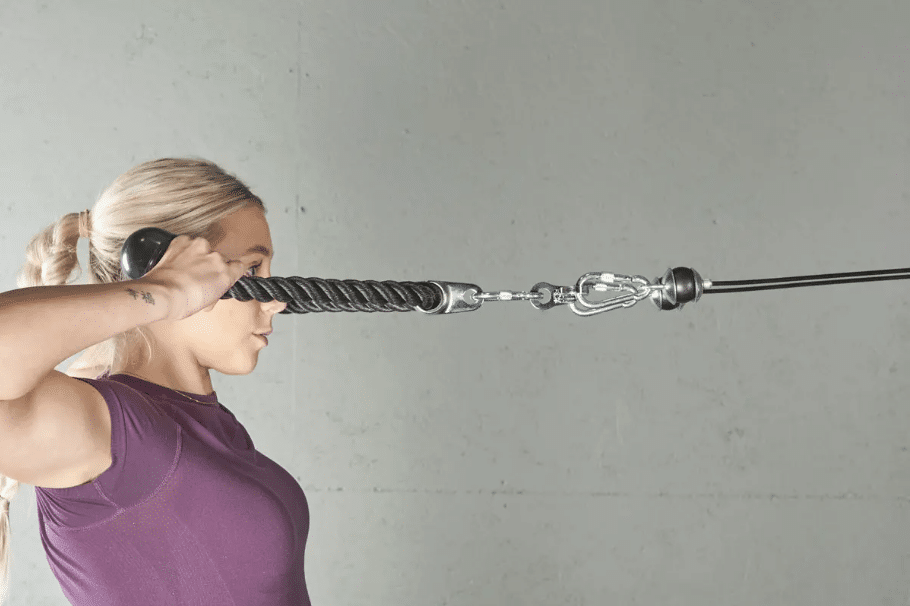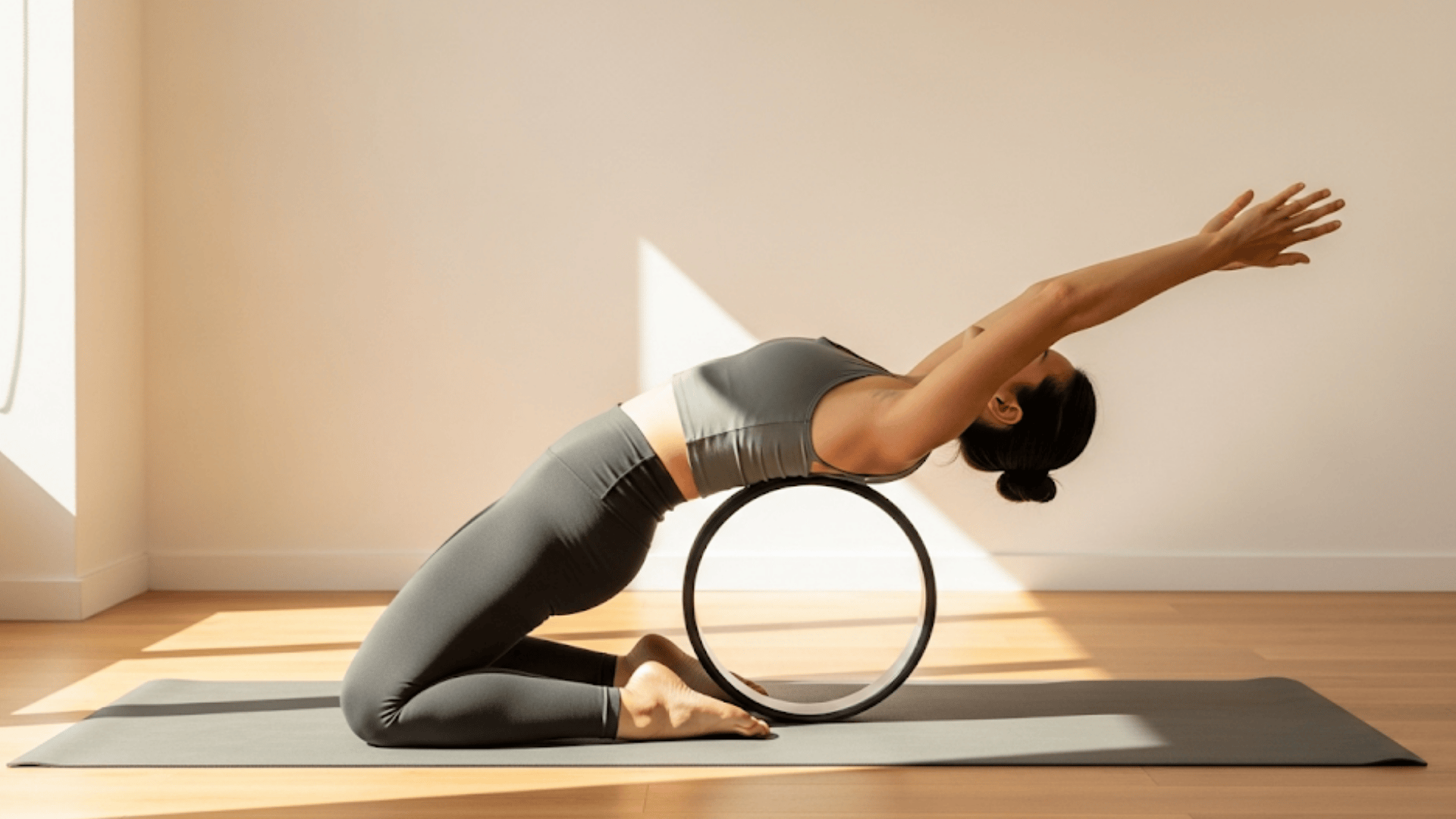Looking for ways to build a stronger, more balanced back?
Most people focus heavily on pushing exercises, such as the bench press and push-ups, which can create muscle imbalances that lead to poor posture and shoulder problems.
The solution lies in horizontal pull exercises that target your back muscles and restore proper balance to your upper body.
Horizontal pull exercises work by pulling the weight toward your torso in a horizontal plane. These movements strengthen your lats, rhomboids, and rear delts, naturally improving your posture.
Unlike vertical pulls, which mainly build width, horizontal pulls create the thickness and strength your back needs for improved function and appearance.
What Is a Horizontal Pull?
A horizontal pull is a movement where you pull the weight toward your body. Your shoulder blades squeeze together as your arms move backward. This action engages multiple muscles simultaneously, helping to build a strong back.
These exercises primarily target your lats, rhomboids, middle traps, and rear delts. Your biceps and forearms help as secondary muscles. All of these work together during horizontal pull movements.
Horizontal pulls differ from vertical pulls in their direction and focus. Horizontal pulls, such as rows, help build back thickness. Vertical pulls, such as pull-ups, build back width. You need both types for complete back development.
Benefits of Horizontal Pulls
Horizontal pull exercises offer several key advantages for your fitness and health goals.
- Strength and Muscle Growth: Horizontal pull exercises build significant back strength by targeting multiple muscle groups simultaneously. They enable you to lift heavy weights safely with supported positions that reduce the risk of injury.
- Better Shoulder Health and Posture: These exercises help correct muscle imbalances caused by prolonged sitting at desks. Strong rhomboids and middle traps help pull your shoulders back, naturally improving your posture. They also balance out pushing exercises like the bench press.
- Sports Performance Benefits: Horizontal pulls enhance athletic performance by developing pulling power for activities such as swimming, rowing, and climbing. They also improve grip strength, which is helpful for any sport that requires holding equipment.
- Easy to Scale for All Levels: These exercises are suitable for both beginners and advanced lifters. Beginners can start with bodyweight rows, while advanced lifters can load up heavy barbells. You can adjust the difficulty by changing your body angle.
The 9 Best Horizontal Pull Exercises
These exercises form the foundation of effective back training, targeting all the major muscle groups involved in horizontal pulling. You’ll find options that work with different equipment and accommodate various skill levels.
1. Inverted Row (Bar/Table/TRX)
The inverted row is perfect for beginners. You lie under a bar and pull your chest up to it. Your feet stay on the ground.
You can use a dining table at home. Just make sure it’s sturdy enough. The higher the bar, the easier the exercise becomes.
How to do it:
- Set a bar at waist height
- Lie underneath with arms extended
- Pull your chest to the bar
- Lower back down slowly
Common Form Mistakes: Many people let their hips sag during the movement, which reduces back activation.
2. Chest-Supported Dumbbell Row
This exercise helps alleviate stress in your lower back. You lie face down on an inclined bench. This lets you focus purely on your back muscles.
The chest support prevents cheating with momentum. This makes it great for muscle building. Your form stays clean throughout the set.
How to do it:
- Set the bench to a 45-degree angle
- Lie chest-down with dumbbells
- Pull weights to your ribcage
- Squeeze shoulder blades together
Common Form Mistakes: People often use too much weight and end up using momentum to swing the dumbbells up.
3. Single-Arm Dumbbell Row
This exercise works one side at a time. It helps fix muscle imbalances between your left and right sides. Your core works hard to keep you stable.
Start with your weaker side first. Match the reps with your stronger side. This prevents imbalances from getting worse.
How to do it:
- Support yourself with one hand on the bench
- Pull the dumbbell with the opposite arm
- Keep your back flat and straight
- Don’t rotate your torso
Common Form Mistakes: The biggest error is rotating the torso during the pull, which reduces back muscle activation.
4. Bent-Over Barbell Row
This is the king of horizontal pull exercises. You can load it with a heavyweight. It builds serious back mass and strength.
This exercise requires good hip hinge mobility. Practice the movement without weight first. Your hamstrings need to be flexible enough.
How to do it:
- Hinge at the hips with a slight knee bend
- Keep your chest up and back straight
- Pull bar to lower chest/upper stomach
- Control the weight down slowly
Common Form Mistakes: Most people stand too upright, which turns this into an upright row instead of a horizontal pull.
5. Seated Cable Row
The cable machine provides constant tension. The weight doesn’t get easier at any point in the movement. This creates consistent muscle tension.
You can easily adjust the weight between sets. This makes it perfect for drop sets. The seated position is also very stable.
How to do it:
- Sit with a slight forward lean
- Pull the handle to your stomach
- Keep elbows close to the body
- Pause briefly at full contraction
Common Form Mistakes: People often lean back too far during the pull, using their body weight instead of their back muscles.
6. Landmine Row (1-Arm)
The landmine setup creates a natural arc of motion. This angle is easier on your shoulders. You can load it heavily and pull with power.
The angled bar path feels more natural. Your shoulder joint stays in a safe position. This reduces injury risk compared to other heavy rows.
How to do it:
- Place the barbell in the landmine attachment
- Stand to one side of the bar
- Hinge forward and grab the end
- Pull to your hip with control
Common Form Mistakes: Many people stand too close to the landmine base, which limits their range of motion.
7. TRX / Ring Row
Suspension trainers add instability to the movement. Your stabilizing muscles work harder. This improves joint health and coordination.
Move your feet further forward to make it harder. Step back to make it easier. This makes progression very smooth and gradual.
How to do it:
- Set up straps at chest height
- Hold handles and lean back
- Walk feet forward to increase difficulty
- Pull chest to handles
Common Form Mistakes: The most common error is letting the body sag in the middle, which reduces core engagement and back activation.
8. Kettlebell Gorilla Row
This exercise starts from a dead stop each rep. You reset between reps on the floor. This builds explosive pulling power.
The neutral grip position is comfortable for most people. Your wrists stay in a natural position. The dead stop removes momentum completely.
How to do it:
- Set two kettlebells on the floor
- Hinge forward between them
- Alternate pulling each kettlebell up
- Let each weight touch the floor before the next rep
Common Form Mistakes: People often try to row both kettlebells at the same time instead of alternating, which reduces stability.
9. Face Pull (Horizontal Accessory)
Face pulls target the smaller muscles that other exercises miss. They work your rear delts and rotator cuffs. These muscles are crucial for shoulder health.
This exercise fixes forward head posture. It strengthens the muscles that pull your shoulders back. Do these at the end of your workout.
How to do it:
- Pull the rope to face level
- Separate hands as you pull back
- Focus on squeezing shoulder blades
- Keep elbows high throughout
Common Form Mistakes: The biggest error is pulling the rope to chest level instead of face level, which reduces rear delt activation.
Safe Pull Exercise Practices
Following proper safety guidelines is crucial when performing horizontal pull exercises, as these movements can put stress on your back and shoulders if done incorrectly. These essential tips will help you stay injury-free while maximizing your results.
- Always warm up for 5-10 minutes with arm circles and light movement before starting your workout.
- Start with lighter weights than usual and gradually increase as your muscles get used to the movement.
- Breathe out when pulling the weight toward you and breathe in when lowering it back down.
- Stop immediately if you feel sharp pain and rest for a few days if something feels wrong.
- Keep your core lightly engaged during all exercises to protect your lower back from injury.
- Control the weight on the way down instead of letting it drop quickly to prevent muscle strain.
- Focus on pulling with your back muscles rather than just using your arms to lift the weight.
The Bottom Line
Horizontal pull exercises are the missing piece in most people’s fitness routines. These movements correct the forward posture that results from excessive sitting and pushing.
Your back muscles get stronger, your shoulders move into better alignment, and your overall upper body balance improves dramatically.
The beauty of horizontal pull exercises lies in their versatility. You can start with simple bodyweight rows and progress to heavy barbell movements as you get stronger.
Each exercise targets the same fundamental movement pattern that your body needs.
Start incorporating these movements into your routine today. Your posture will improve, your shoulders will feel better, and your back will develop the strength it deserves.
Which horizontal pull exercise are you most excited to try? Let us know in the comments below.
Frequently Asked Questions
How Do I Improve My Horizontal Pull Strength?
To improve horizontal pull strength, incorporate exercises such as inverted rows, bent-over rows, and cable rows into your routine. Focus on form, increase reps, and add weight gradually.
Are Vertical Pull-Ups Better than Horizontal Pull-Ups?
Vertical pull-ups target lats and biceps more; horizontal pull-ups emphasize rear delts and traps. Neither is better; they complement each other.
What Can You Replace Horizontal Pull-Ups with?
Replace horizontal pull-ups with inverted rows, bent-over rows, dumbbell rows, or cable rows to effectively target similar back and arm muscles.

